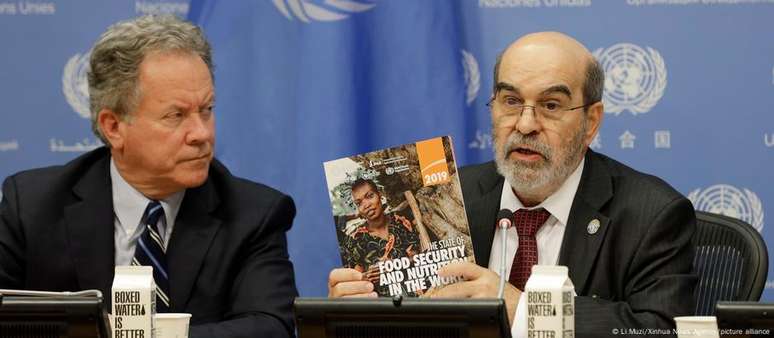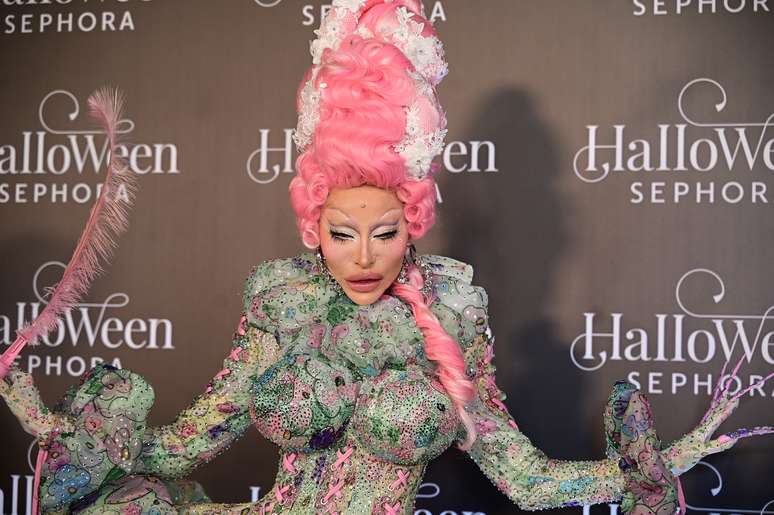José Graziano Da Silva tells DW that Brazil is an example for the world when it leaves the United Nations hunger map, but needs political will to face over 28 million Brazilians in food insecurity. “Hunger is easily resolved in Brazil if there is a political will,” says José Graziano da Silva, 75 years old, former director of FAO (organization of the United Nations for food and agriculture), when he commented on the map of Brazil of the map, announced at the end of July by the United Nations.
It is the indication that less than 2.5% of the country’s population is at risk of malnutrition or lack of access to sufficient foods – after three years they burst this ceiling. Graziano celebrates the feat, but does not dodge the 28 million Brazilians who still live starvation experiences in their daily life.
“I think Brazil is a good example for the world and shows that it is basically a political decision to want to end hunger. Now we have the means to do it.”
Dedicated to the theme of food safety and agricultural issues for over 30 years, Graziano was a special minister for food security and the struggle for hunger during the first term of President Luiz Inacio Lula da Silva (2003-2006), when he was responsible for decisive policies in the reduction of poverty in Brazil at the moment, as Hunger Zero.
He joined FAO in 2006 as a regional representative for Latin America and the Caribbean, where he mobilized the countries in the region to commit to eradicating hunger until 2025. In 2012, he assumed the position of CEO of the body, the first Latin American elected for this position.
In an interview with DW, he talks about challenges for the end of hunger and democratization of healthy diet.
End of the “green revolution”?
Graziano explains that until the early 1970s there was a situation of food insecurity in the world linked to the lack of food, which generated big names in China, India and Africa, for example.
Then came a movement of agricultural modernization that has significantly increased food production all over the world, with new varieties of high -performance crops, fertilizers, chemical inputs, pesticides and intensive and mechanized agricultural techniques. It was the “green revolution” so called, focused on the plan to transform the country into an exporter of agricultural goods.
“Now there are enough food for everyone, but there is a distribution problem. People don’t have the money to buy food,” he says.
“I think we are going through a crucial phase. The” green revolution “no longer works. So it is time to review this model that has been very successful and therefore abandon that it causes resistance. But I think it is a matter of time until we can get it. Because today we have alternatives in ecological or regenerative agriculture that offers better quality products and the consumer knows.”
Connects farmers with consumers
Today, one of the major challenges is to feed people with quality products, underlines Graziano. It supports the creation of programs aimed mainly at children and urban peripheral areas, where most “food deserts” are concentrated: areas where difficult areas in which minimally elaborate or fresh products such as fruit, vegetables and vegetables are difficult.
“Today you go to a suburb of a big city anywhere in the world and it is very difficult to find fruit and vegetables. There are many kiosks that sell soda, cakes, hamburgers and ultra -elaborate products, rich in sugar, salt and trans fats”, illustrates.
One of the outputs is to facilitate the contact of farmers with consumers, with outdoor fairs, for example.
Resistance of multinationals against stamps
Brazil, like other Latin America countries, has a great problem of obesity. After many struggles with the food industry, the government has made a warning of ultra -elaborate foods, indicating a high sodium content, saturated fats and sugar, a more advanced policy than some European countries.
Graziano recalls that the first country to implement a labeling law was Chile, in 2016, with stamps and advertising restrictions. There, companies can no longer put animals in their packaging to attract children, for example. Ultra -processed products with the black seal should be on the bottom of the shelves or in a high place that is difficult to access children.
“This was possible thanks to an important internal political dialogue to which he joined part of the food industry, in particular the national industry. The resistance came more than multinationals,” he says.
“It was soon discovered that the company that respected the standards had a much better commercial performance. And when the others started losing market shares, they ended up selling.”
The challenge of taxes and pesticides
Graziano criticizes the lack of tax incentives for healthier agriculture. “It is a tax problem. We do not have tax differentiation that favors the quality of food, as most European countries have. We have very low production costs due to the use of large fertilizers and pesticides without imported taxes. All this promotes the agricultural industry and translates into cheaper prices compared to family or organic agriculture.”
This distortion intensifies Brazil’s paradox as a country with immense production capacity and abundance of food, but with a large number of people in food insecurity.
“This worries me very much and worries consumers who receive these products without any guarantee that they are eating healthy foods. Brazil uses a huge amount of pesticides, many of which are prohibited in other countries. We need more restrictive laws on the use of chemicals in food.”
Source: Terra
Rose James is a Gossipify movie and series reviewer known for her in-depth analysis and unique perspective on the latest releases. With a background in film studies, she provides engaging and informative reviews, and keeps readers up to date with industry trends and emerging talents.





-1h7z8ugdh88jb.jpg)


